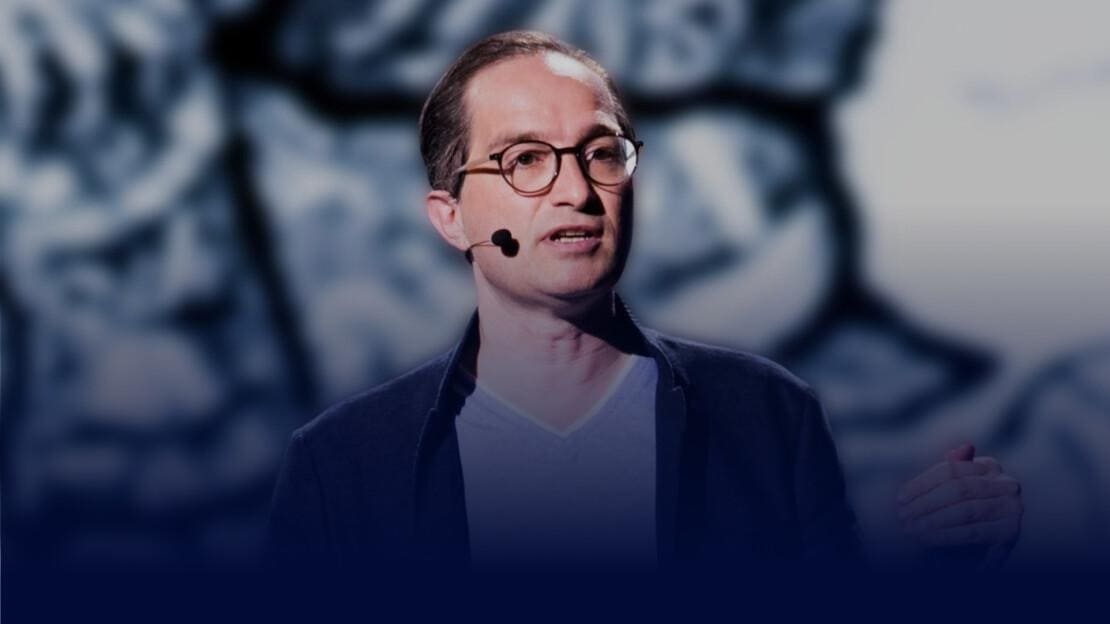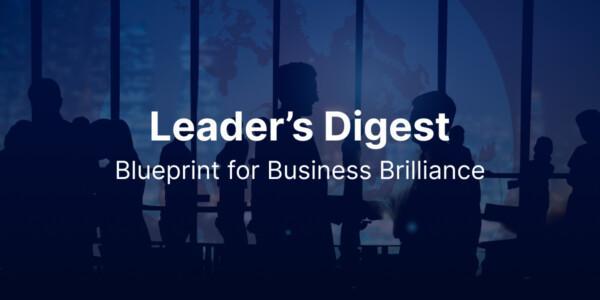22Apr2024
In a recent webinar hosted by Business Forum Group, Peter Hinssen, a prominent figure in the realm of technology and innovation, shared his thoughts on the role of artificial intelligence in shaping the future of business. Drawing from his extensive background in startups, corporate leadership, and academia, Peter provided an overview of how businesses can leverage AI to thrive in an era of constant change.
You can also tune into our Youtube channel to watch the webinar recording.
Jan Helge Moen: Generative AI at ServiceNow
Before Peter’s keynote, Jan Helge Moen, the Country Manager of ServiceNow Norway, provided practical AI insights shortly. Jan talked about the powerful effect of generative artificial intelligence, and compared it to other big tech advances he’s seen, like the rise of the internet and mobile phones. He pointed out that unlike these technologies, which took a while to become widespread, generative AI was used globally right after it was released.
6 AI Insights from Jan:
- Enhancing Human Capabilities: Jan compared generative AI to a bicycle that greatly improves our abilities, showing it has a lot of potential to spark business innovation.
- Transformation Beyond Efficiency: He stressed that generative AI is about more than just making things faster or automating tasks; it’s about changing businesses by combining human and machine intelligence to create more value.
- Awareness of Limitations: Despite its benefits, generative AI has drawbacks, such as not being able to reason like humans and sometimes confidently giving wrong answers, which can affect trust and decision-making.
- Strategic Business Shifts: Jan talked about how ServiceNow has fully embraced AI, changing how they work across the company to improve how they operate internally and serve customers.
- Focus on Practical Applications: He emphasized the importance of using generative AI in specific areas where it can really make a difference. For example, ServiceNow uses AI to improve self-service options, boost employee productivity, and automate coding, which saves a lot of time and money.
- Quantifiable Benefits and Continuous Innovation: Jan mentioned that ServiceNow’s AI tools have been incredibly valuable, helping the work of many employees. He highlighted the continuous need for innovation and improvement with AI.
Jan’s points give a practical view of generative AI in business, showing its great potential and the challenges that we need to consider.
Peter Hinssen: How to Leverage the Power of AI
Throughout his presentation, Peter shared valuable insights derived from his considerable experience with AI, technology, and innovation. Let’s delve into five key themes from the webinar!
The Evolution of Digital to ‘Never Normal’
Peter started by reminding us about the transition from analog to digital technologies, a transformation that many in the audience have witnessed over their lifetimes. He described this shift as a “wonderful journey” from mechanical typewriters to digital omnipresence, highlighting how digital tools have become integral to everyday life.
Digital technology, once a groundbreaking innovation, has now become the standard backdrop of our lives. Peter discussed this shift, emphasizing that what was once considered special is now expected and commonplace. This normalization of digital technology has set the stage for more profound changes driven by AI. The key difference is that the changes driven by AI happen much more rapidly than the technological changes we’ve seen before.
Looking forward, Peter introduced the concept of the ‘never normal,’ a future characterized by perpetual change and uncertainty. In this new era, AI does not just support existing processes but drives the evolution of entirely new ways of living and working. Peter’s perspective suggests that businesses need to continuously adapt to thrive in this unpredictable environment.
“There are decades when nothing happens and then there are weeks where decades happen.” – Lenin
AI’s Impact on Business and Society
Peter provided a historical overview of AI, tracing its origins back to the 1950s. He discussed the Dartmouth conference, where the term “artificial intelligence” was first coined, and how these early ideas have evolved into today’s sophisticated AI systems. However, although the technology has a longer history, its usage became mainstream overnight. Now, most of us use it in our work and even in our free time.
Highlighting some real-world applications of AI, Peter talked about StorySign, an app that helps deaf children read by translating text into sign language using AI. He contrasted this with HireVue, an AI-powered lie detector used in interviews, sparking debates about privacy and ethics.
The impacts of AI are diverse, from enhancing accessibility to raising ethical concerns. Peter used the metaphor of AI as both heaven and hell to describe its dual potential to create solutions and problems. He stressed that while AI can offer incredible benefits, it also poses significant risks and challenges that society must manage carefully.
Peter emphasized these four things for you to keep in mind:
- AI is like a black box: “We train it with a lot of data and it produces interesting stuff—and sometimes it’s wrong.”
- AI tools have guardrails: “If you want to understand the guardrails, check out the system cards.”
- AI is biased: “Generative AI is trained on a lot of data and if the input data is biased the output data will be even more biased.”
- AI needs to be governed: “The biggest challenge is how are we going to harness the power?”
Data: The Lifeblood of AI
In the discussion on data, Peter noted the exponential increase in data volumes over recent decades, which has been critical to the advancement of AI technology. The massive volume of data and the speed of change are creating a challenge for businesses: “This I think is the number one challenge of virtually every company out there: more information and less and less time to turn it into valuable knowledge.”
Peter continued by emphasizing that the effectiveness of AI largely depends on the quantity and quality of data available for training AI models.
“Size Matters—it’s all about data. If you don’t have enough data to train these models it just doesn’t really work.”
He pointed out that while most companies are adept at handling structured data, they often overlook the benefits hidden within unstructured data. According to him, structured data is well-organized and usually resides in traditional database formats that are easily searchable and manageable. This data is straightforward for businesses to process and analyze using standard tools and methods.
Unstructured data, on the other hand, does not fit neatly into traditional database formats. It includes various formats such as text, video, images, and social media postings. This type of data is prevalent in the digital age but poses significant challenges because it is harder to organize and analyze efficiently. Peter argued that mastering unstructured data is the next frontier for businesses seeking to fully capitalize on AI’s potential.
“So how much information in your company is unstructured, how much is structured? Most companies probably will have 70, 80, up to 90% unstructured content and only 30, 20, 10% that is structured.”
The Emergence of Content Science
Peter makes a clear distinction between data science and content science. While data science is well-established and focuses primarily on structured data through statistical and computational techniques, content science is emerging as its counterpart dealing with unstructured data.
Most companies are adept at data science, employing hundreds or even thousands of data scientists to derive insights from structured data. However, content science is about tapping into the vast amounts of unstructured data—text, images, videos, etc.—that businesses accumulate but often underutilize. This involves applying AI to generate actionable insights from data that does not fit into predefined models.
“How can you graft your unique signature knowledge with the power of AI?”
The integration of specialized knowledge with AI, termed “grafting” by Peter, is crucial for businesses to derive meaningful and actionable insights from their data. He advocated for a strategic approach to combining domain expertise with advanced AI techniques. This blending is crucial because while AI can process data at an unprecedented scale, its usefulness and accuracy increase when combined with a deep, contextual understanding of a particular field. For instance, in industries like law or healthcare, where precise and accurate information is critical, combining AI with expert knowledge can lead to more relevant and strategic insights.
Essential AI Insights for Business Leaders
Going further, Peter emphasized the need to address ethical issues that arise with AI deployment, such as data privacy, bias, transparency, and the potential for misuse. Establishing clear guidelines and ethical frameworks is crucial to ensure AI is used responsibly and that it benefits society without causing harm or exacerbating inequalities.
Finally, he explored the implications of AI for the workforce. He predicted that AI would transform job roles and functions but noted that this does not necessarily mean a reduction in employment. Instead, AI could augment human capabilities and enable new forms of work, reshaping careers and industries in profound ways. However, this transformation also requires a rethinking of roles and responsibilities to harness AI’s potential fully while mitigating its challenges, particularly in terms of skill gaps and the changing needs of the workforce.
“I think it could also turn HR from a very transactional to a much more strategic role.”
While AI offers significant opportunities for growth and innovation, it also demands us to address its ethical challenges and thoughtfully integrate it into the fabric of organizations and societies.
For any leader out there, Peter offered three pieces of advice:
- Dive deeper into the topic of AI. “It’s difficult to separate the hype from the reality… Go beyond the hype.” Peter suggested that each leader should spend a bit more time learning more about AI. He sees AI being a hot topic in boardrooms already, but he argues that everyone should still learn more before taking action.
- Focus on AI’s implications on the future of work. “It’s a great opportunity for HR.” For HR leaders, Peter suggested focusing on how AI can help you redefine the skills and requirements of your people. AI can also be an excellent tool to find and get rid of tasks that are unnecessary.
- Start unlocking the potential of content science. “Graft your unique content signature with the power of AI together.” Peter underlined that this is the best way to benefit from AI.
For those of you interested in learning more about the idea of content science, download Peter’s PDF on the topic.

 by:
by: 
